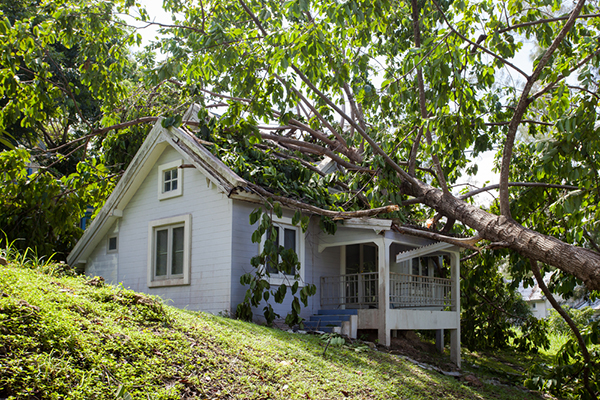5 Common Site Access Problems to Avoid by Using a Roof Work Safety Checklist
Author: Heidi J. Ellsworth | December 12, 2023
As roofing contractors, sales teams and crews are looking at potential jobs, it's critical to consider the accessibility of a jobsite. This can include road access, roof access and overall safety for the crew.

One of the ways to help resolve the challenges of accessing a property is to get a look at the site before you bid and make a site-specific roof work safety checklist. There's some great technology that brings aerial and street-level imagery and measurements into your office before the sales team ever heads out. By taking the time to make measurements, print photos and gather data, the entire team can be made aware of any safety or access issues.
A strong roof work safety checklist can help you keep an eye out for some common site access problems and start brainstorming potential solutions.
1. Electrical Safety
Knowing where power lines are located can save roofers' lives. Once you locate all of the electrical wiring on or near a building (with help from your local power company, if necessary), make sure every crew member knows where it is. Hands, tools or metal flashing should never come into contact with wiring and power lines.
Roofers should also use a non-conductive fiberglass or wooden ladder. Electricity can leap from a live wire to a ladder several feet away so ladders should be at least twice the distance of the length of the ladder away from power lines, according to the Consumer Products Safety Commission of the United States.
2. Kids, Pets and Trampolines
For residential projects, ask yourself: Is the roof accessible around kids, pets and backyard features? Taking a look at the property and being aware of trampolines, kiddie pools, animal pens or playhouses can help you discuss accessibility and family members' safety with a homeowner. It is also crucial to understand if pets or livestock will be affected by the roofing job or if they may not be friendly to workers. Encourage homeowners to prepare their property and household for a safe re-roofing.
3. Vehicles
Both homes and businesses deal with parking issues. Be sure to view multiple aerial images of the property at different times, on different days, so your salespeople and production crews can discuss parking and relocation of vehicles. Not only can it avoid a safety issue for crews working around various vehicles, but it can also protect the roofing company from any liability issues involving damaged cars or injuries. Talk to building owners about moving cars, especially those that impact your route to the roof.
4. Forklifts and Rooftop Loading
It is important to determine how close you can get to the building to load materials and tools onto the roof. Is there enough room around the building? Are there any structures surrounding it?
Measure around the building ahead of time to determine if you can use a forklift to load the roof, or if you need to work with your distributor on rooftop loading. Having an overall plan for tearing off the old roof and loading new roofing materials makes or breaks the profitability of many roofing jobs.
5. Trees
Are there too many trees or branches in the way to access the roof or property? When there is an abundance of trees and foliage, it may be time to bring in an arborist. Homeowners and building managers are looking for roofing contractors that will make a roof repair easy for them. By reviewing the property ahead of time and bringing in the right experts, a contractor can differentiate their company from the competition.
Overall, the best solution for jobsite access and safety is to have a roof work safety checklist of items that may disrupt or slow production. By utilizing imagery ahead of time and performing a strong jobsite inspection, roofing company owners and salespeople can bid on jobs wisely and win projects they know their teams can tackle.